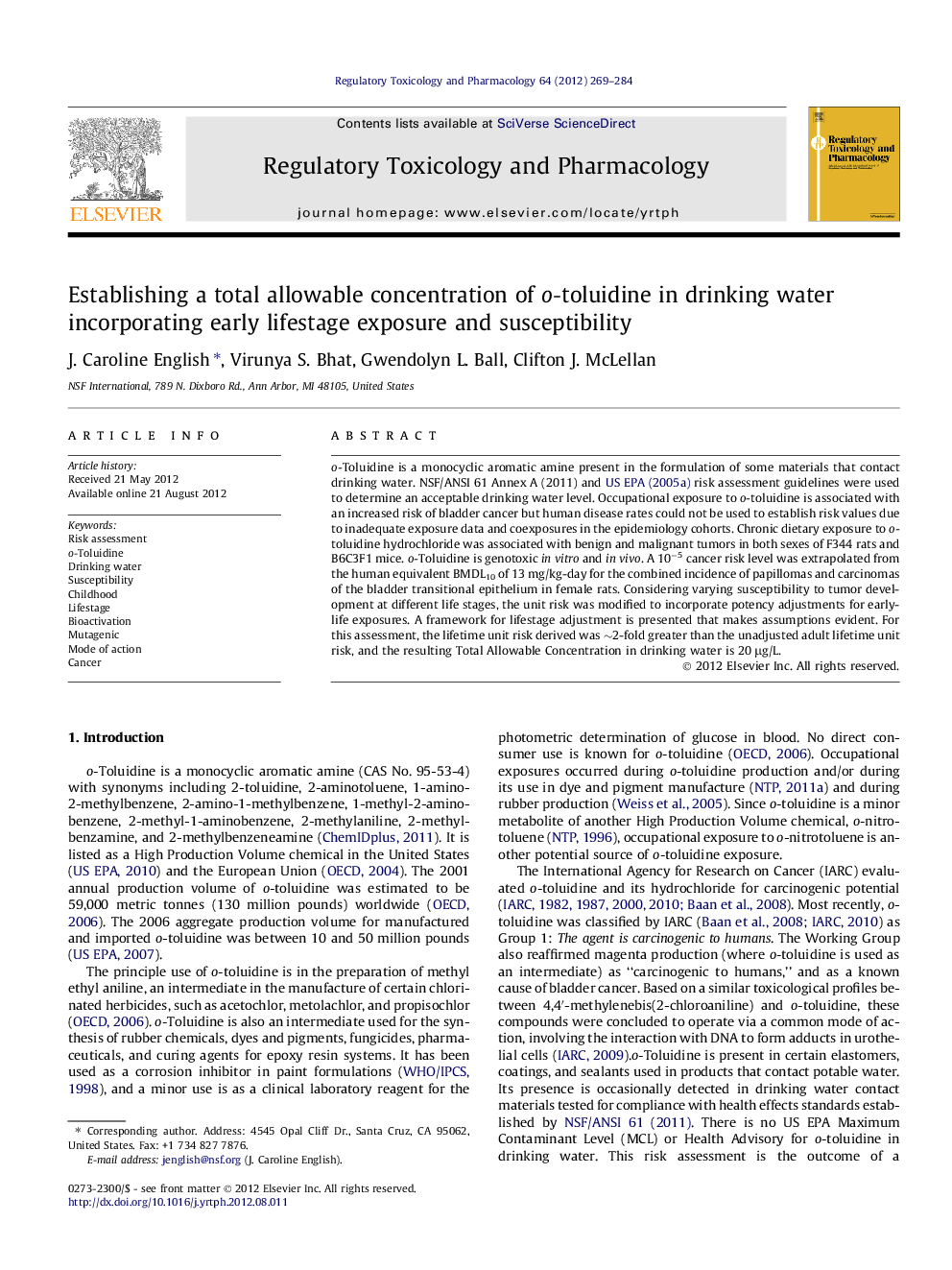| Article ID | Journal | Published Year | Pages | File Type |
|---|---|---|---|---|
| 2592350 | Regulatory Toxicology and Pharmacology | 2012 | 16 Pages |
o-Toluidine is a monocyclic aromatic amine present in the formulation of some materials that contact drinking water. NSF/ANSI 61 Annex A (2011) and US EPA (2005a) risk assessment guidelines were used to determine an acceptable drinking water level. Occupational exposure to o-toluidine is associated with an increased risk of bladder cancer but human disease rates could not be used to establish risk values due to inadequate exposure data and coexposures in the epidemiology cohorts. Chronic dietary exposure to o-toluidine hydrochloride was associated with benign and malignant tumors in both sexes of F344 rats and B6C3F1 mice. o-Toluidine is genotoxic in vitro and in vivo. A 10−5 cancer risk level was extrapolated from the human equivalent BMDL10 of 13 mg/kg-day for the combined incidence of papillomas and carcinomas of the bladder transitional epithelium in female rats. Considering varying susceptibility to tumor development at different life stages, the unit risk was modified to incorporate potency adjustments for early-life exposures. A framework for lifestage adjustment is presented that makes assumptions evident. For this assessment, the lifetime unit risk derived was ∼2-fold greater than the unadjusted adult lifetime unit risk, and the resulting Total Allowable Concentration in drinking water is 20 μg/L.
► We derived a drinking water level for the unregulated contaminant o-toluidine. ► US EPA methodology addressed early lifestage-related susceptibility. ► A transparent framework for simultaneous exposure and potency adjustments is presented. ► The total allowable concentration in drinking water was set at 20 μg/L.
